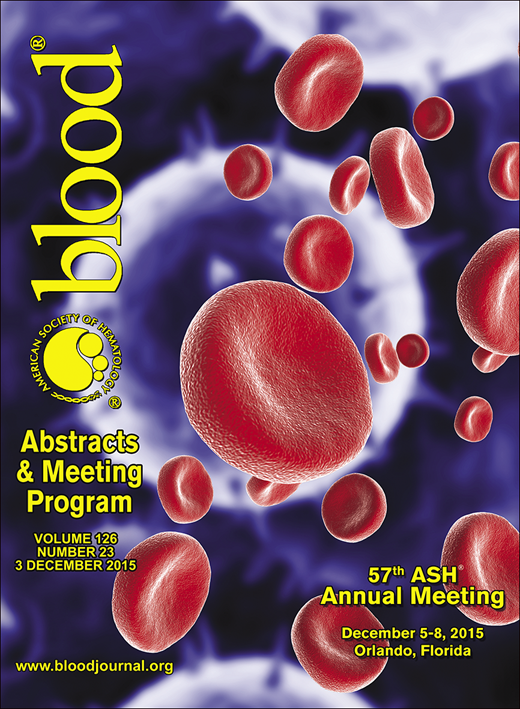Abstract
Introduction:
Therapeutic red blood cell exchange (RBCX) is a process by which diseased red cells are replaced by healthy donor red blood cells. In patients with sickle cell disease, RBCX has been used to treat acute stroke, severe acute chest syndrome, multiorgan failure, priapism and splenic sequestration. It is also being used more commonly in the prevention of vaso-occlusive pain crises and for stroke prophylaxis for patients considered to be at high risk of stroke based on abnormal transcranial Doppler flow rates. In May 2014, we transitioned from the COBE Spectra apheresis system (Terumo BCT) to the next-generation Spectra Optia apheresis system (Terumo BCT) for all red cell exchange transfusions performed on our patients with sickle cell disease. A previous small study (n = 33 RBCX transfusions) compared the two instruments (Caridian BCT) and showed no difference between exchange volumes, processing time, pre and post-exchange hematocrit and HbS levels (Perseghin et al. Transfusion and Apheresis Science, 2013). However, other clinical parameters such as changes in white blood cell count and platelet counts were not examined. In order to determine if there were any differences in hematologic parameters between the 2 apheresis instruments, we measured the differences between pre and post-exchange HbS levels, white blood cell count (WBC), hematocrit (Hct), and platelet counts for all of our adult patients who underwent RBCX transfusions on both instruments.
Methods:
This was a single institution, retrospective chart review of all adult patients with sickle cell disease (HbSS n=17, HbS/β0 thalassemia n = 1, HbSC n =1) who underwent routine, monthly RBCX at Children's Hospital and Research Center Oakland between November 2013 and February 2015. Indications for RBCX included a risk of stroke or a history of stroke, acute chest syndrome, or renal failure. All patients received RBCX transfusions on the COBE Spectra prior to May 2014 and were then transitioned to Spectra Optia in May 2014. Pre and post-exchange transfusion HbS levels, WBC, Hct, and platelet counts were measured for each procedure. All exchange transfusions were non-emergent and well tolerated. Statistical analyses using the student's t test and rank sum test were performed with Stata 14.0 software (College Station, Texas).
Results:
A total of 19 adult patients (mean average age 25 years old) underwent 153 red blood cell exchange transfusions (Spectra Optia n =87, COBE Spectra n = 66). There was a small increase in mean hematocrit percentage for both instruments (28.33 + 4.3 % to 29 + 3.06 % and 28.16 + 4.29% to 29.2 + 3.04% on the Spectra Optia and COBE Spectra, respectively). All other post-RBCX parameters decreased. The mean changes are shown in Table I. The HbS percent decreased from a combined mean of 39.86 + 12.11 % to 20.26 + 8.43 % for both instruments. The WBC decreased from a combined mean of 12.72 + 3.13 x 1000/ mm3 to 8.67 + 2.15 x 1000/ mm3. The platelet count decreased from a combined mean of 368.82 + 125.75 x 1000/ mm3 to 191.01 + 62.78 x 1000/ mm3. The mean parameter values for each patient correlated with the mean changes for each instrument based on statistical analysis using both the student's t test and rank sum test.
Conclusions:
The starting hematologic values were similar between the two instruments. There was no statistical difference between the raw pre and post-RBCX HbS, Hct, WBC, or platelet values or the mean changes in these parameters between the COBE Spectra and Spectra Optia instruments. There was also no statistical difference in the mean changes between the pre and post RBCX hematologic parameters amongst the 19 patients. Both instruments allowed for effective reduction in HbS percentage with comparable decreases in WBC and platelet counts while maintaining adequate hematocrit values for all 19 adult patients with sickle cell disease.
Mean changes between Pre-RBCX and Post-RBCX.
| Instrument . | . | Change in % HbS . | Change in WBC x1000/mm3 . | Change in % Hct . | Change in platelet count x1000/mm3 . | . | . | . | . | . | . |
|---|---|---|---|---|---|---|---|---|---|---|---|
| Spectra Optia | N | 84 | 87 | 87 | 85 | ||||||
| Mean | -20.28 | -4.01 | 0.67 | -172.44 | |||||||
| SD | 7.02 | 2.55 | 2.86 | 76.98 | |||||||
| COBE Spectra | N | 66 | 66 | 66 | 66 | ||||||
| Mean | -19.18 | -4.12 | 1.09 | -178.02 | |||||||
| SD | 7.89 | 2.26 | 2.57 | 81.02 | |||||||
| p-value | 0.37 | 0.78 | 0.34 | 0.67 |
| Instrument . | . | Change in % HbS . | Change in WBC x1000/mm3 . | Change in % Hct . | Change in platelet count x1000/mm3 . | . | . | . | . | . | . |
|---|---|---|---|---|---|---|---|---|---|---|---|
| Spectra Optia | N | 84 | 87 | 87 | 85 | ||||||
| Mean | -20.28 | -4.01 | 0.67 | -172.44 | |||||||
| SD | 7.02 | 2.55 | 2.86 | 76.98 | |||||||
| COBE Spectra | N | 66 | 66 | 66 | 66 | ||||||
| Mean | -19.18 | -4.12 | 1.09 | -178.02 | |||||||
| SD | 7.89 | 2.26 | 2.57 | 81.02 | |||||||
| p-value | 0.37 | 0.78 | 0.34 | 0.67 |
There are 3 missing values for HbS and 2 missing values for platelet count for Spectra Optia. SD = standard deviation, WBC = white blood cell count, Hct = hematocrit
No relevant conflicts of interest to declare.
Author notes
Asterisk with author names denotes non-ASH members.

